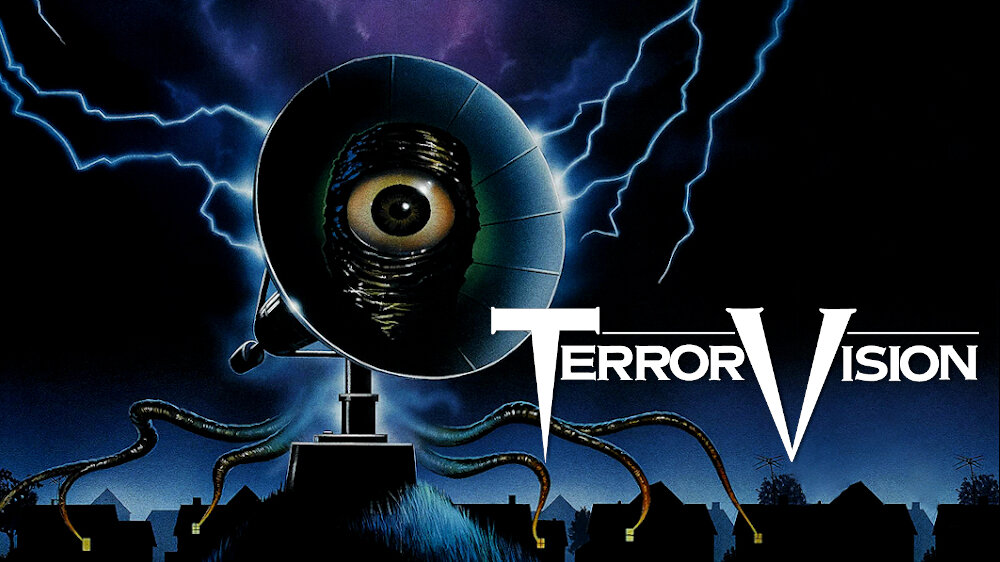Terrorvision
Hello and allow me to introduce meow-self. I'm Mike Langlie of the solo project Cat Temper. The Paradise Arcade gents were kind enough to take me in off the street and let me scratch out some thoughts for the site. Let me start with some memories of what got me on the path as a synth music fan.
My introduction to electronic music was born in terror. No, not the classic cheese masterpiece Terrorvision, though TV was the delivery mechanism into my impressionable young mind.
I was a true 80s child who grew up with the advent of MTV. Even by 1983 I was bored with hair metal and soft rock singles and video clichés. Suddenly something broke through that trance-inducing glaze to provide my first solid "WTF?!" experience.
As a suburban kid I didn't know about Herbie Hancock or his long history in the foreign world of Jazz. I also hadn't heard much Hip Hop or Electro outside of the odd breakdance performance at the school talent show. So I was unprepared for the smashing of styles and sounds blasting off from Hancock's "Rockit" — and especially the accompanying fever dream of a video.
Herbie Hancock had just begun exploring the use of synthesizers and drum machines, mixing the sounds of Hip Hop with jazzy grooves, Cuban Batá rhythms, vocoder, and most importantly turntable scratch solos. It was an alien amalgamation to hear in a pop music format, not to mention the novelty of a largely instrumental track in a sea of saccharine singers. It's no surprise that Hancock's record company was hesitant to release the experimental effort, or that neighborhood kids flipped out when Herbie and crew gave it a test flight at their nearby stereo shop.
The video is a whole new level of weird. A domestic setting — much like the one in which I watched — is engulfed in chaos that never lets up. Robot mannequins crazily gyrate through a variety of mundane home activities. Legs in business slacks kick open the wardrobe and furiously swing to the beat. Emotionless puppets have epileptic fits while endlessly repeating familiar routines under bedsheets and over breakfast. A pair of female legs in hot pants struts seductively through the living room, sure to crush anyone in their high-heeled path as easily as a Terminator. Herbie himself appears only in quick cameos on staticky TV screens. It deservedly dominated the MTV Video Music Awards which featured a performance of Hancock's band outnumbered by the autonomous appendages. The video left its freaky and funky impression seared in my mind, forever fueling my love of genre mashups and avant-garde visual art.
"Rockit" was disorienting even after multiple viewings, but it didn't prepare me for the unsettling vision of "Close to the Edit" by Art of Noise one year later. For as unfamiliar as I was with Hip Hop and the slashing sound of vinyl scratching, I was less ready for this cacophonous combo of industrial rhythms and discordant orchestra hits. The track is like a tongue-in-cheek Fluxus deconstruction of traditional pop. The video reinforces that with its surreal assault on time-worn musical tropes.
A quartet of people that shouldn't seem frightening — 3 classical musicians and a little girl cosplaying a character from Ladies and Gentlemen, The Fabulous Stains — conduct a ritual of revenge on instruments once revered. When not punishing a piano like vultures with power tools they lumber menacingly in herky-jerky movements towards the viewer like Sadako the cursed ghost girl in The Ring. The hair on the back my neck stood on end watching this video alone in my basement, nervously giggling reassurance to myself that they couldn't possibly break through the TV...could they? Seeing "Close to the Edit" for the first time was like receiving a transmission by invaders from another dimension breaking the fourth wall as much as that poor piano's legs.
Of course I had to immerse myself in both albums featuring these songs. My usual casual listening turned into concentrated studying of the exciting sounds and atypical structures. How were these songs even made? How could I create my own electronic audio wonderlands? Why was I wasting time on piano lessons when I should be making musique concrète by demolishing my family's record collection and furniture?
I'm thankful for these two songs and videos shaking up my world and teaching me at an early age that music doesn't need to adhere to any expectations. Let’s celebrate the power of confrontational and confounding compositions.
Cat’s Corner is a collection of commentary by Mike Langlie of Cat Temper about his early synth-fluences.




